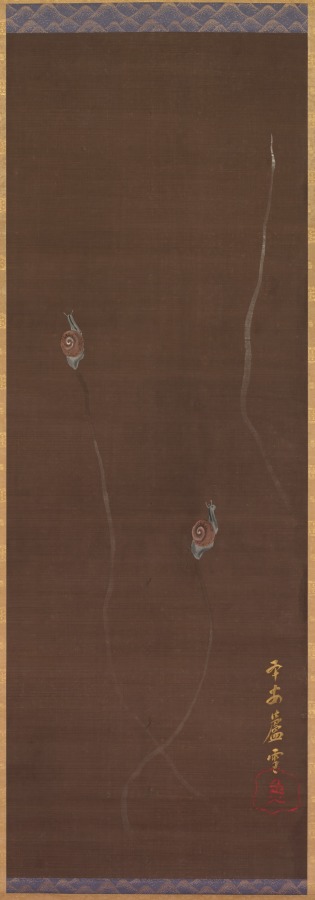| schema:description 9 | "tombstone: Snails on a Wall, 1700s. Nagasawa Rosetsu (Japanese, 1754-1799). Hanging scroll, ink, color, gold and silver pigments on paper; image: 114.3 x 40.6 cm (45 x 16 in.); overall: 200.7 x 54 cm (79 x 21 1/4 in.). The Cleveland Museum of Art, John L. Severance Fund 1998.5...(more)" |
| schema:description | "measurements: Image: 114.3 x 40.6 cm (45 x 16 in.); Overall: 200.7 x 54 cm (79 x 21 1/4 in.)" |
| schema:description | "technique: hanging scroll, ink, color, gold and silver pigments on paper" |
| schema:description | "creditline: John L. Severance Fund" |
| schema:description | "id: 160688" |
| schema:description | "collection: ASIAN - Hanging scroll" |
| schema:description | "wall_description: Rather than using the ink tones and palette of traditional Japanese painting, Rosetsu carefully described an earthen wall and two snails in a Western-influenced manner known as doro-e ("mud" or "earth" painting), building up pigments like the brushstrokes of thick oil paint.
This is a commonplace scene, yet it surprises us with its novelty and elegance. The snails' trails are rendered in silver paint and the artist applied his signature in gold paint—materials traditionally reserved for more noble subjects.
Rosetsu was an independent painter active in Kyoto, Japan's cultural capital. He was known for his visual wit and superb range of technical skills....(more)" |
| schema:description | "type: Painting" |
| schema:description | "culture: Japan, Kyoto, 18th century" |

